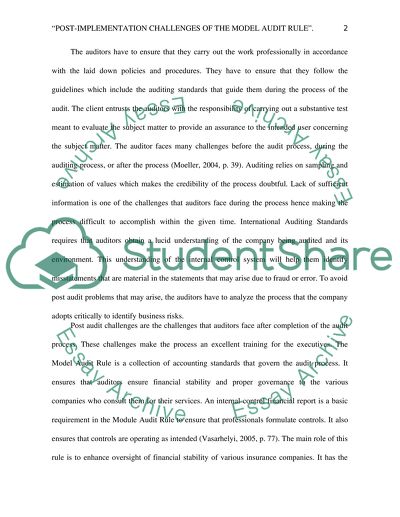Cite this document
(“Post-Implementation Challenges of the Model Audit Rule Research Paper”, n.d.)
Post-Implementation Challenges of the Model Audit Rule Research Paper. Retrieved from https://studentshare.org/finance-accounting/1444141-yppost-implementation-challenges-of-the-model
Post-Implementation Challenges of the Model Audit Rule Research Paper. Retrieved from https://studentshare.org/finance-accounting/1444141-yppost-implementation-challenges-of-the-model
(Post-Implementation Challenges of the Model Audit Rule Research Paper)
Post-Implementation Challenges of the Model Audit Rule Research Paper. https://studentshare.org/finance-accounting/1444141-yppost-implementation-challenges-of-the-model.
Post-Implementation Challenges of the Model Audit Rule Research Paper. https://studentshare.org/finance-accounting/1444141-yppost-implementation-challenges-of-the-model.
“Post-Implementation Challenges of the Model Audit Rule Research Paper”, n.d. https://studentshare.org/finance-accounting/1444141-yppost-implementation-challenges-of-the-model.


